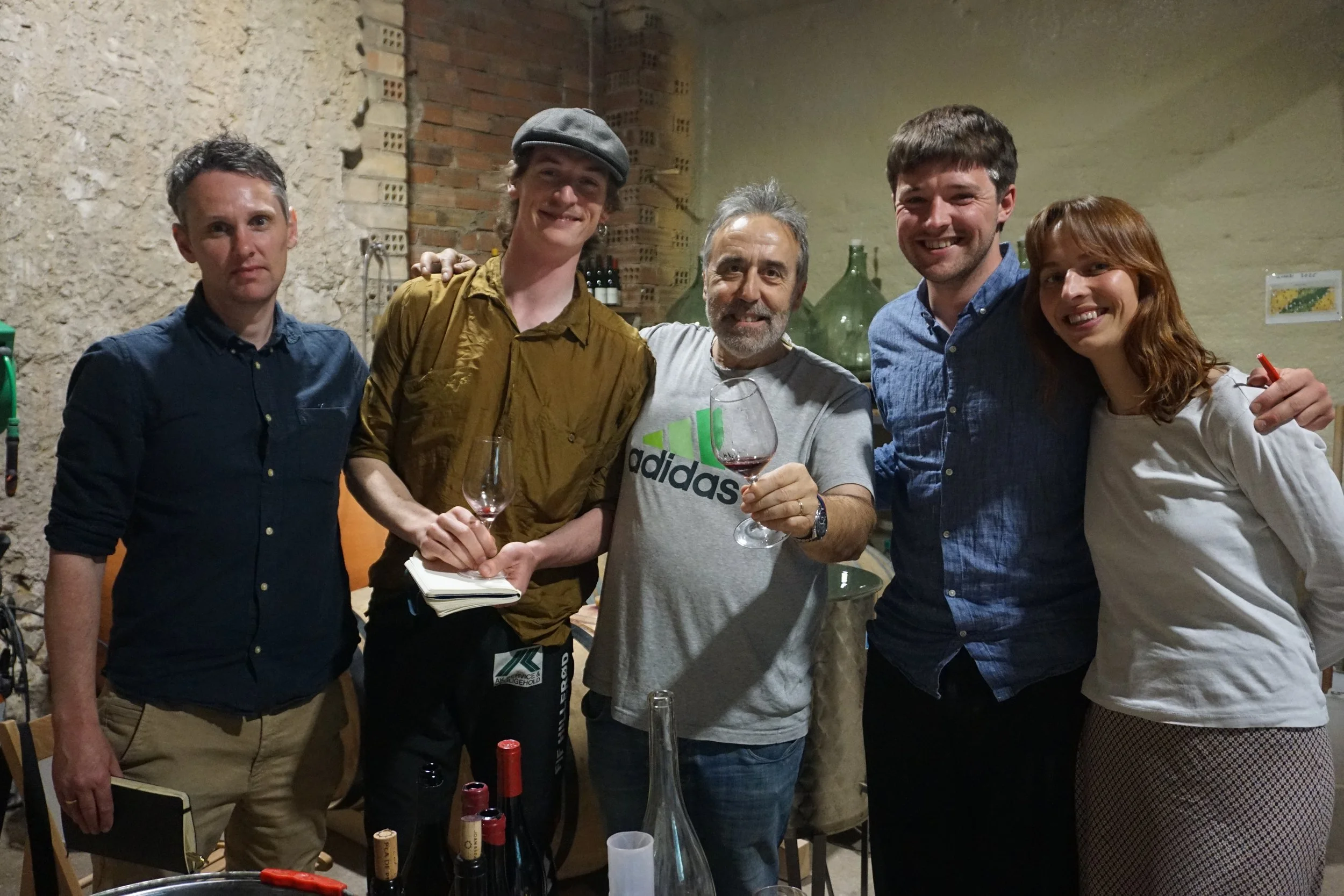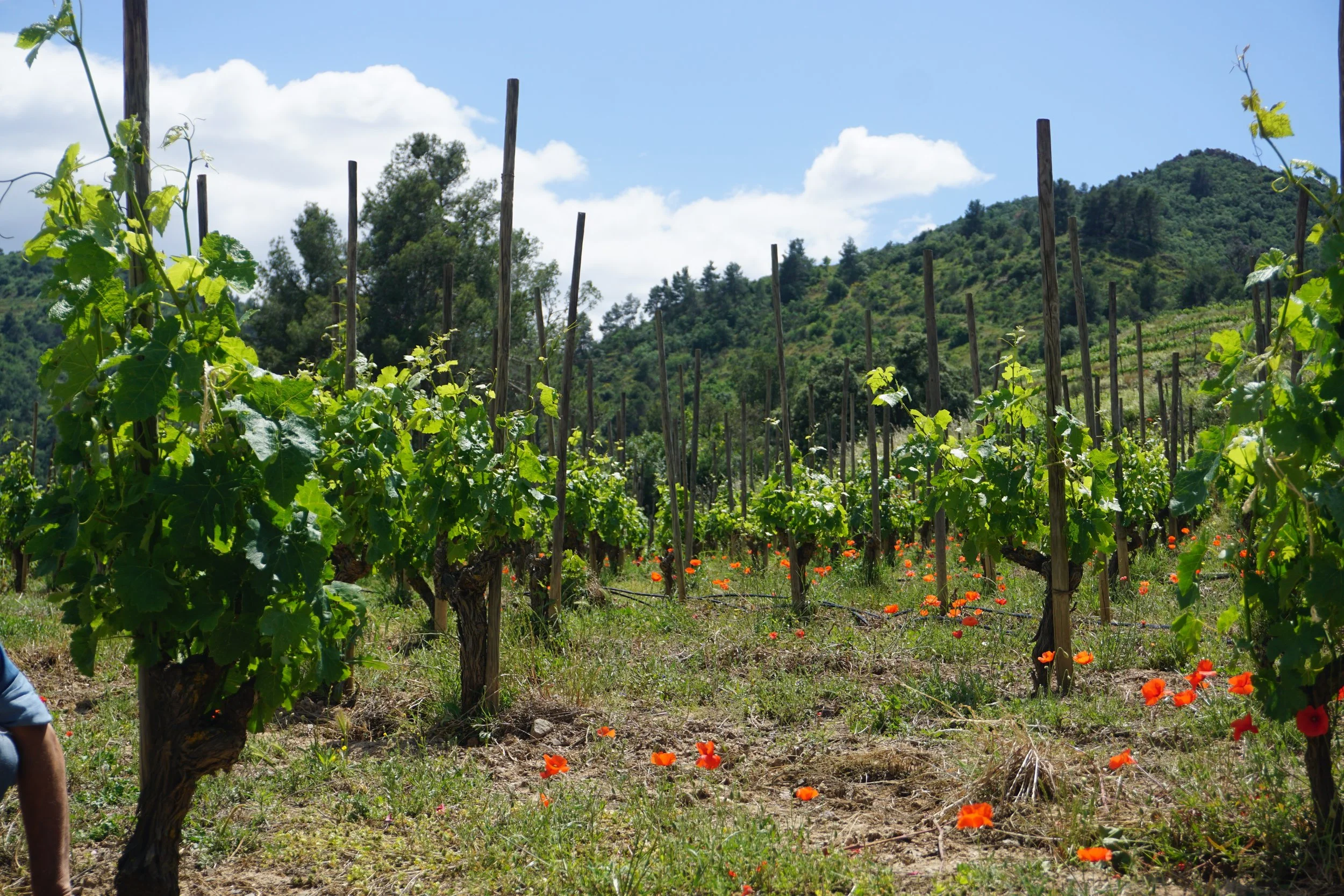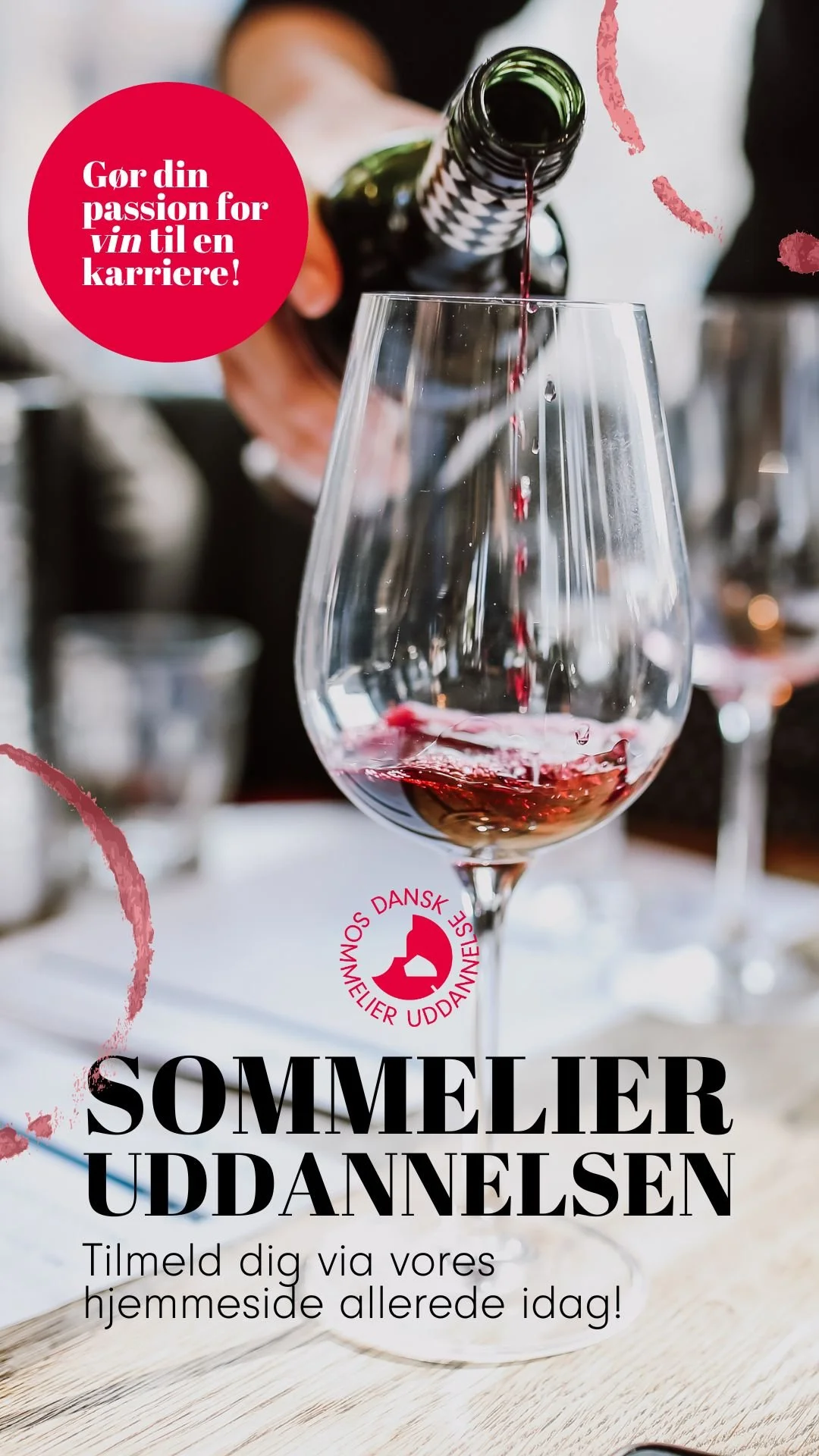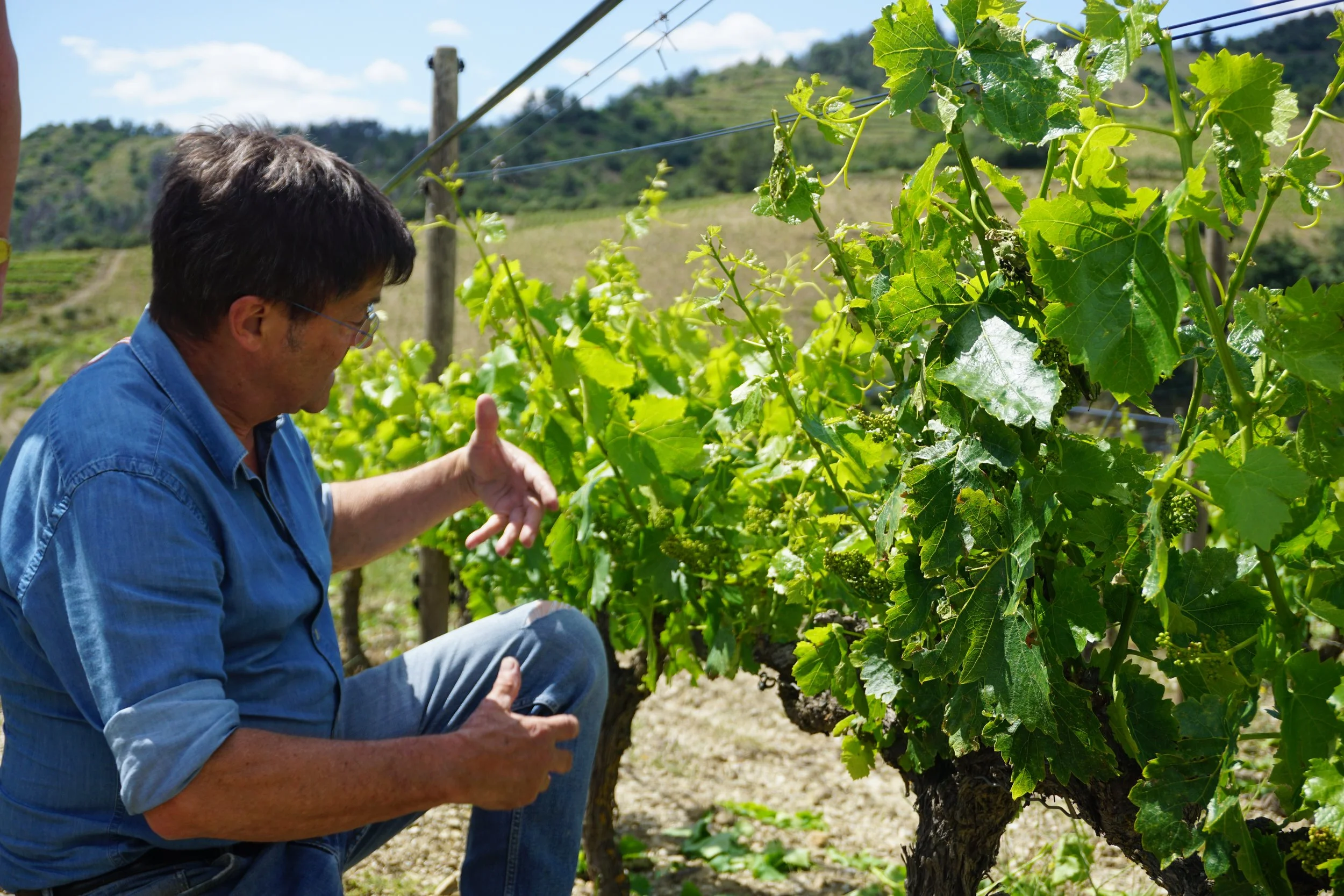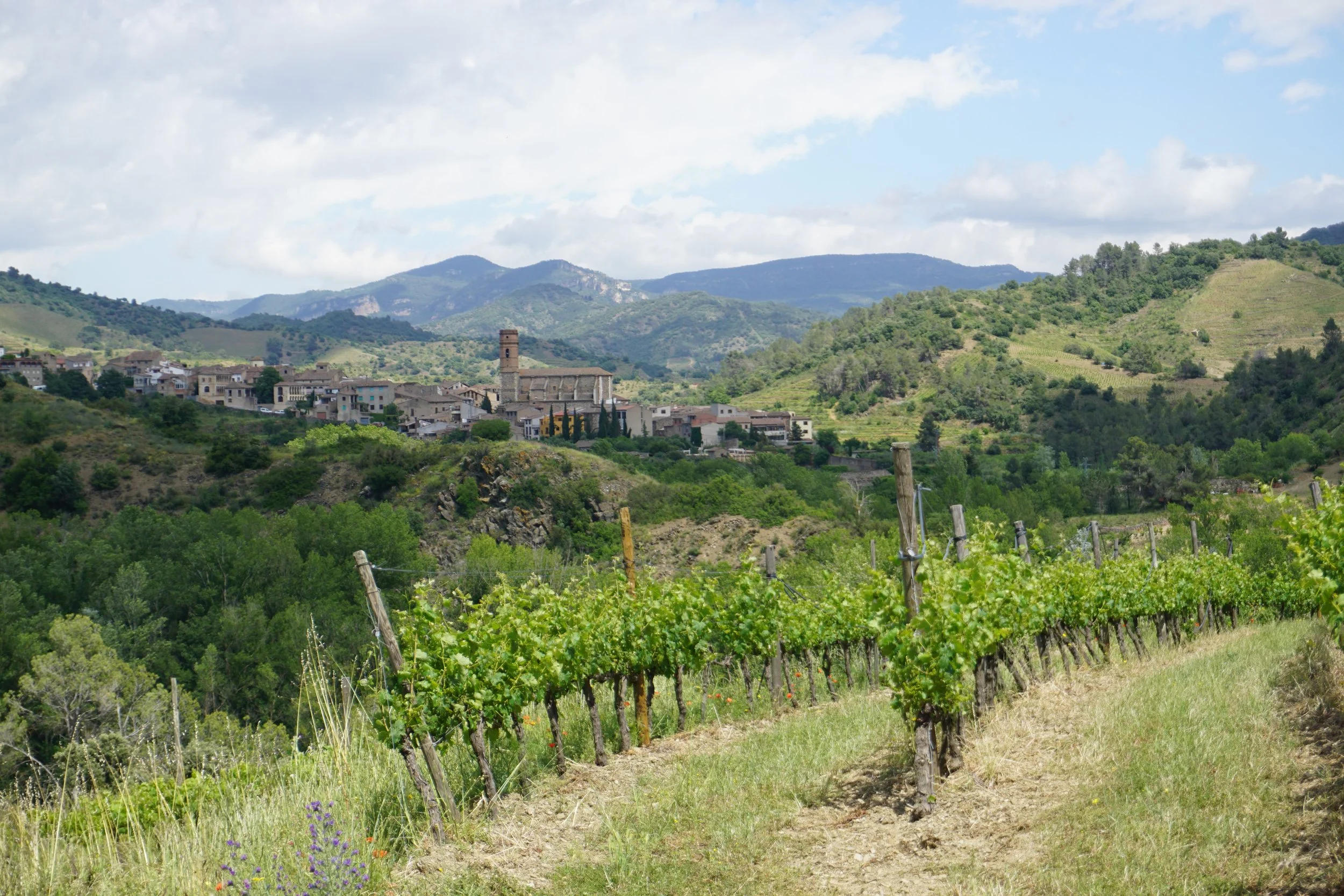Wine, Place & People. From Priorat to the Basque Coast
Kenny Brandt, DSF to the left. Photo: Noah Solkær Lassen
Wine is not just something you drink. It is also people, plants, tradition and adaptation. It is a living dualism between what is and what becomes. The clash between nature and culture, interpreted and passed on. And, if you really believe it, visible as well as invisible energies that exist everywhere in our world and that connects with the earth, travel through the vines, into the grapes and finally end up in the bottle.
In a big word, you could say that the finished wine is the product of countless small parts that together create a liquid not only full of life and diversity, but also of spirit. Last year I experienced this on Vincaféen's wine tour to northern France, and this year it was Spain. Or more precisely, Catalonia, the Basque Country, La Rioja and Aragon. 9 days with 16 visits in the northeastern part of the Iberian Peninsula.
Dirk Hoet, Mas de les Peres, Poboleda, Priorat. Photo: Noah Solkær Lassen
Day 1 Copenhagen – Priorat, Catalonia
Sponsored content from Dansk Sommelier Uddannelse
The trip began like many other trips. An early morning in the metro on the way to Kastrup Airport. It is Thursday, May 22nd, and I have gathered four of my skilled employees on the platform. The weather is cloudy, the temperature is sad and it is all in all a great day to head south to warmer skies.
Five hours later we step off the plane and into El Prat Airport in Barcelona. We pick up our rental car and drive 131 km inland, where the first wine visit of the trip awaits us at Dirk Hoet and Celler Mas de les Peres in Poboleda, Priorat. The weather is warm, the sun is shining and we are absolutely ready for what awaits us.
Of the 16 visits on the trip, we are already working with three of them, and Dirk is one of them. He is a trained veterinarian, but gave up his job in 1999 and moved to Spain to make wine. We found him 13 years ago on a wine tour and have been working with him ever since. Out in the vineyard, where his staff is green pruning, he talks about the last two years of drought, last week’s hailstorm that destroyed quite a few leaves and flowering bunches in 10 minutes, and his aversion to the increasingly rigid D.O. system, which we will hear much more about during our tour. It quickly becomes clear that being a winegrower in today’s world has not become easier, not only due to climate changes, but also because the bureaucracy surrounding wine production is giving producers gray hairs.
As we leave Dirk and drive the short road towards Porrera, where we have rented a small apartment, it is with a good feeling in our stomachs. We are underway, the sun is shining and we are taking in all the impressions. Of all the many wine regions I have visited during my career, Priorat is without a doubt one of the most beautiful. It is mountains and cliffs with small streams that run through the green vineyards like the hairpin bends of the roads. It is all kinds of different and perfumed scents, dust that swirls up from the narrow gravel roads and small, cozy villages where time seemed to have stopped. It is bush wines, grape varieties and the people who dedicate their lives to making wine, it is nature that questions the cultivation of the land every single day and then it is finally what ends up in the bottle. That is Priorat.
Dirk Hoet, Mas de les Peres, Poboleda, Priorat. Photo: Noah Solkær Lassen
Day 2 Priorat, Tarragona and Montsant, Catalonia
The next day we have tastings in Priorat, Tarragona and Montsant. We have found three small, family-owned producers who all work with Garnacha and Cariñena, the first of which, Celler Joan Simo – whom we, like Dirk, have been working with since 2013 – is located in Porrera. We therefore stroll leisurely to the local tavern in the morning and order five coffees. The town is slowly waking up, the small river flows quietly under the stone bridge and the light, warm wind carries the wonderful scents of the flowers with it.
The visit to Joan Simo confirms why we chose to work with him in the first place. The wines are dusty, powerful, full-bodied, spicy and elegant at the same time. The best of Priorat and a good start to the day. During the tasting, one of my employees discovers a small carafe, with a long, narrow neck in the middle, on the table. She asks about it and is told that it is a Porro, which is used in every Spanish home to drink everyday wine. Especially cava, says Gerard, who owns the winery, and demonstrates by pouring wine into the carafe, after which he holds it high in the air and elegantly pours the wine down his throat, much to the amusement of all of us.
Photo: Noah Solkær Lassen
During the rest of the trip, we look in vain for a Porro, but alas, we never find it.
The next two visits of the day are exactly as good as we had hoped. At both Joan Bada in Tarragona and Joan d’Anguera in Montsant, we encounter all the qualities that a red Priorat wine can have, even though the first is natural, the latter biodynamic and both are completely outside the bureaucratic D.O. system. The last time Anguera sent his wines in for inspection was with his 2021 vintage, where he received 3 out of 10 stars because he had not adjusted his wine according to the tasting notes the system required. Then he decided to leave the D.O. behind him.
Porrera, Priorat. Photo: Noah Solkær Lassen
Day 3 Terra Alta, Catalonia – San Sebastian, Pais Vasco
On the third day of the tour, after a visit to a producer in Terra Alta, we embark on a road trip through Catalonia with its many mountains, into the flatter and hillier terrain of Aragon and over the desolate, barren landscape of Navarre to the beautiful, lush and green Pais Vasco, which suddenly emerges from the great mountains and evokes memories of South Tyrol.
This is the first time I have been to the Basque Country, and I am completely taken aback by the magnificent and beautiful landscape, which lies right next to the Bay of Biscay in the Atlantic Ocean. The next two days we have an apartment in San Sebastian, and this evening we are having wine and Pinchos in the city's many cozy streets, where even the bars have a Michelin star.
Day 4 Getariako Txakolina, Pais Vasco
The next day we have three visits in one of the three Basque appellations, Getariako Txakolina, which consists of a modest 440 hectares spread over 34 vineyards. We visit Gaintza, K5 and Hika, and they are three very different visits, but with the common denominator that they all make wine from the local green grape Hondarrabi Zuri, which is behind the vast majority of the area's light, fresh and lively white wines.
From start to finish it is a beautiful day, the weather is good, we have a view of the fantastic Bay of Biscay and from the high, steep and rural vineyards, where the cows graze on nearby meadows, we can look down over the beautiful, green and rugged area bordering the sea. We quickly find out that there are two ways to make wine in Txakolina, either the classic way, which produces very fresh and immediate wines, which are served through a perforated cork from a high distance – a bit like the Porro – or the modern way, where the wine is allowed to mature on the lees for many months and some even are aged in barrels, which produces dry wines with more complexity.
Both ways have strengths, so it is difficult to choose, as all three producers in their own way make quality wines that represent the area. However, we have another evening in San Sebastian to taste more and think about things, before we head for La Rioja the next day.
This article is part one of two. Part two will follow in the coming weeks.

